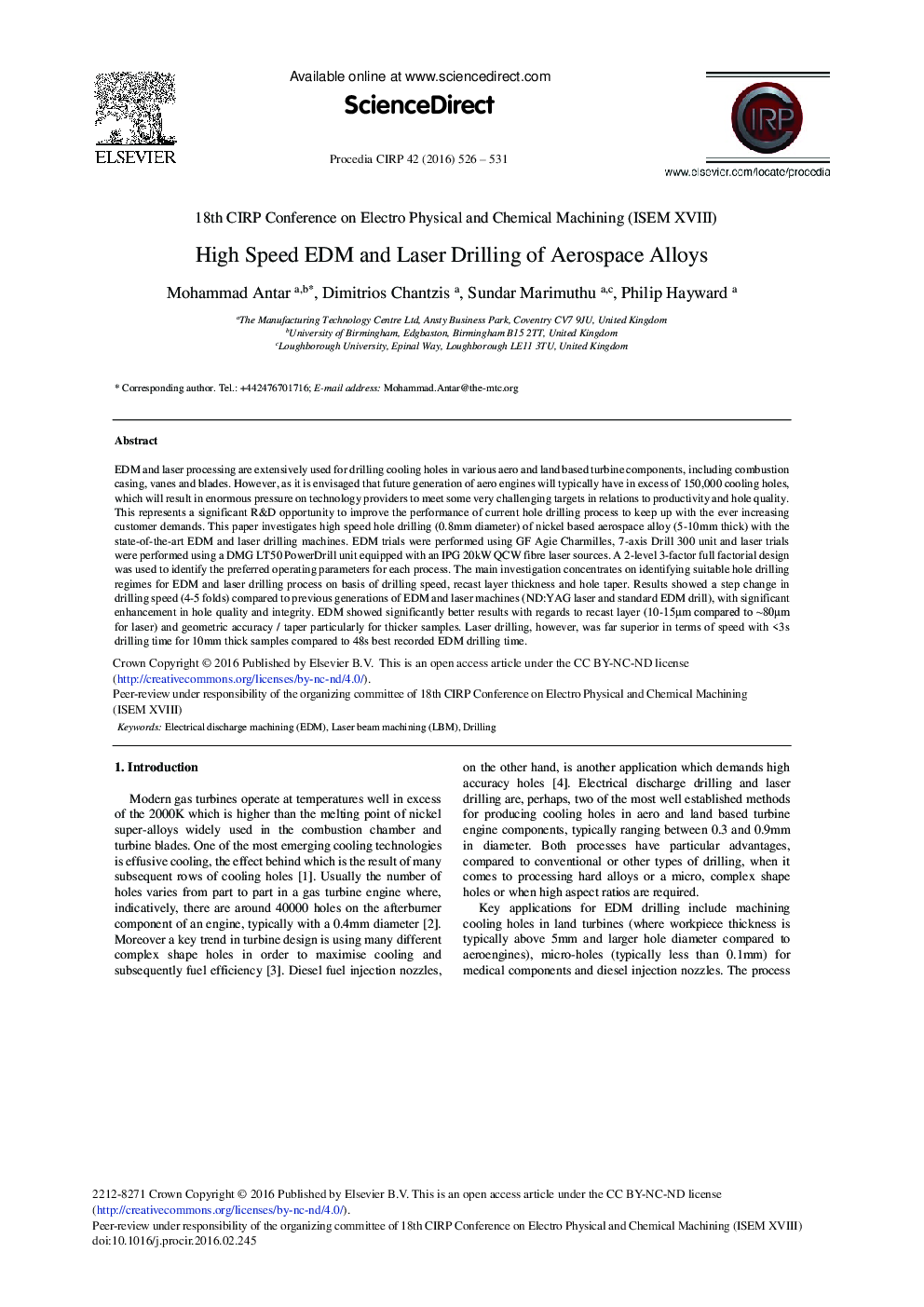| Article ID | Journal | Published Year | Pages | File Type |
|---|---|---|---|---|
| 1698998 | Procedia CIRP | 2016 | 6 Pages |
EDM and laser processing are extensively used for drilling cooling holes in various aero and land based turbine components, including combustion casing, vanes and blades. However, as it is envisaged that future generation of aero engines will typically have in excess of 150,000 cooling holes, which will result in enormous pressure on technology providers to meet some very challenging targets in relations to productivity and hole quality. This represents a significant R&D opportunity to improve the performance of current hole drilling process to keep up with the ever increasing customer demands. This paper investigates high speed hole drilling (0.8 mm diameter) of nickel based aerospace alloy (5-10 mm thick) with the state-of-the-art EDM and laser drilling machines. EDM trials were performed using GF Agie Charmilles, 7-axis Drill 300 unit and laser trials were performed using a DMG LT50 PowerDrill unit equipped with an IPG 20 kW QCW fibre laser sources. A 2-level 3-factor full factorial design was used to identify the preferred operating parameters for each process. The main investigation concentrates on identifying suitable hole drilling regimes for EDM and laser drilling process on basis of drilling speed, recast layer thickness and hole taper. Results showed a step change in drilling speed (4-5 folds) compared to previous generations of EDM and laser machines (ND:YAG laser and standard EDM drill), with significant enhancement in hole quality and integrity. EDM showed significantly better results with regards to recast layer (10-15 μm compared to ∼80 μm for laser) and geometric accuracy / taper particularly for thicker samples. Laser drilling, however, was far superior in terms of speed with <3s drilling time for 10 mm thick samples compared to 48s best recorded EDM drilling time.
